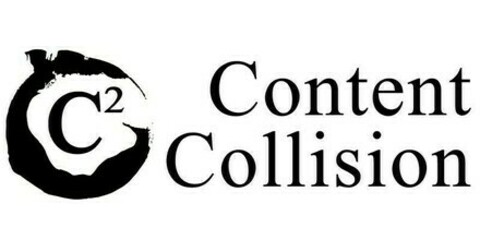How to measure the ROI of PR distribution services
Is PR moving the needle? Discover how to track ROI for press release distribution and gain better brand insights post-campaign.

Is PR really moving the needle? Track these metrics right after your campaign to find out.
Investing in PR distribution services can be a powerful way to extend your brand’s reach. However, to assess if it’s truly delivering value, measuring ROI immediately after the campaign is essential. Knowing how to track PR ROI not only gives insight into a campaign’s performance but also helps in selecting PR services that align with measurable outcomes.
Below, we explore nine key methods to track PR distribution ROI, complete with examples to show how each metric translates into actionable insights.
1. Website traffic and referral sources
One of the quickest indicators of PR success is a boost in website traffic immediately following a campaign. By monitoring referral sources in Google Analytics, you can track traffic increases from media outlets that covered your press release.
For example, a PR campaign announcing a product launch might result in a 25% rise in site traffic, with significant referrals from media sites like TechCrunch or PRNewswire.
Impact assessment: Suppose 5,000 extra visitors led to 100 purchases, with each purchase averaging US$50. That translates to an additional US$5,000 in revenue directly attributable to the campaign. Calculating these results gives a clear connection between PR efforts and tangible revenue.
2. Media mentions and reach
Media mentions and audience reach are key indicators of how far your PR message has traveled. After distributing a release, track the publications where it appears.
For instance, if a PR campaign generates coverage in 15 outlets, including industry publications like AdWeek and local newspapers, your potential reach could expand to 500,000 readers.
Impact assessment: By calculating the ad equivalency of that reach, you can estimate what it would have cost to achieve similar exposure through paid ads. If running ads in those outlets would cost US$10,000, you could consider that your PR campaign provided US$10,000 in earned media value.
3. Engagement metrics on social media
Social media engagement often reflects how well a PR campaign resonates with the public. If your campaign featured a charitable initiative, you might see traction on platforms like X (previously Twitter) and LinkedIn. Track engagement metrics, including shares, likes, and comments, which show public interest.
Impact assessment: If similar social engagements would typically cost US$0.50 each, and your campaign drives 7,300 interactions (shares, likes, comments), your earned media value for social engagement alone is US$3,650. This metric shows how PR can build brand visibility and public support cost-effectively.
4. Lead generation and conversion rates
PR campaigns with a clear call-to-action (CTA), such as a sign-up or a webinar invitation, allow for direct tracking of conversions. By using UTM tags, you can trace the number of sign-ups or sales resulting from a PR link. Suppose your campaign brought in 200 sign-ups, with 20 becoming paying customers.
Impact assessment: If each customer’s lifetime value is US$200, then your campaign has generated US$4,000 in direct revenue, giving you a solid ROI calculation for the PR spend.
5. Brand search volume and sentiment analysis
Brand search volume and sentiment analysis provide insight into how the PR campaign has influenced public perception. Right after launching a PR release, check Google Trends to see if search interest in your brand rises. You can also use sentiment analysis tools to track changes in public perception.
Impact assessment: A 30% rise in brand search volume and a 20% increase in positive sentiment indicate rising consumer interest and trust in your brand. Both of these outcomes support long-term brand strength and consumer loyalty.
6. Brand mentions and SEO impact
While major media outlets may not guarantee backlinks (often reserved for “sponsored posts”), PR can still influence SEO by building brand mentions.
Crafting a PR narrative that naturally encourages mentioning your website or brand name increases the chance of a backlink, though it remains a rare bonus. Instead, focus on mentions of your brand across credible sites, which can still contribute to SEO and brand credibility.
Impact assessment: For example, if a PR story results in 15 mentions from high-authority sites like Forbes or Mashable, your domain authority could improve, and organic traffic may rise as a result. Even a 10% boost in organic traffic can drive further monthly conversions, providing an ROI without additional PR spend.
7. Earned media value (EMV)
Earned media value (EMV) quantifies PR exposure in terms of ad cost equivalency. For example, if a PR campaign reaches 1 million people through media coverage, calculate what that exposure would cost if bought as ad space.
Impact assessment: If ads in those outlets would cost US$15,000, and your PR campaign cost US$3,000, you’ve achieved US$15,000 in EMV—a clear, high-ROI result.
8. Market awareness and surveys
To gauge long-term PR impact, market awareness surveys are a useful tool. After a campaign promoting a new service, conduct a survey to track brand awareness growth. If awareness within your target audience rises by 20%, PR can be credited with strengthening your brand’s positioning.
Impact assessment: This increase in brand recognition positions your business more competitively, which can enhance future sales and partnership opportunities.
9. Customer acquisition cost (CAC) and customer lifetime value (CLV) impact
Analyzing customer acquisition cost (CAC) and customer lifetime value (CLV) is another way to measure PR’s impact. Post-campaign, if your data shows CAC dropped by 15% and CLV increased by 10% among PR-acquired customers, you’re seeing lasting ROI benefits.
Impact assessment: If CAC decreased from US$100 to US$85 and CLV increased from US$300 to US$330, PR’s contribution to customer value becomes evident, helping to justify continued PR investment.
Reliable PR distribution services go beyond sending out press releases. They track key performance metrics to show clear ROI and meaningful results for your business.
Services like Content Collision (C2) not only focus on targeting that matches your narrative but also prioritize business goals in their KPIs from the start. As you select a PR distribution service, look for those that integrate these ROI methods to provide the best value for your brand.
For more recommendations on ROI-focused PR distribution services, explore our list of top providers.

Content Collision provides performance-based digital PR services and B2B content marketing services for tech startups in APAC and beyond. Book a quick call with our team to learn more.



